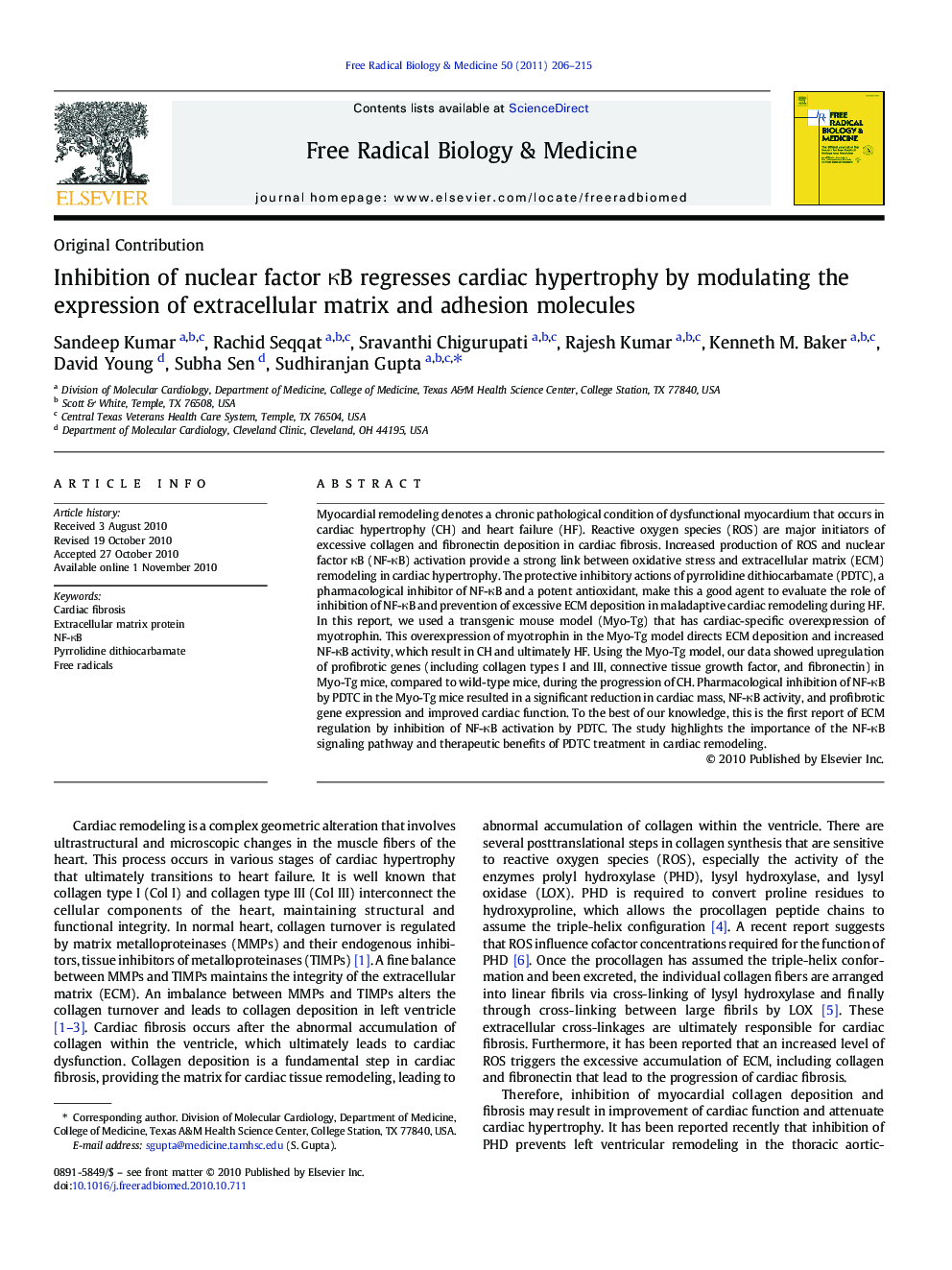| Article ID | Journal | Published Year | Pages | File Type |
|---|---|---|---|---|
| 1909182 | Free Radical Biology and Medicine | 2011 | 10 Pages |
Myocardial remodeling denotes a chronic pathological condition of dysfunctional myocardium that occurs in cardiac hypertrophy (CH) and heart failure (HF). Reactive oxygen species (ROS) are major initiators of excessive collagen and fibronectin deposition in cardiac fibrosis. Increased production of ROS and nuclear factor κB (NF-κB) activation provide a strong link between oxidative stress and extracellular matrix (ECM) remodeling in cardiac hypertrophy. The protective inhibitory actions of pyrrolidine dithiocarbamate (PDTC), a pharmacological inhibitor of NF-κB and a potent antioxidant, make this a good agent to evaluate the role of inhibition of NF-κB and prevention of excessive ECM deposition in maladaptive cardiac remodeling during HF. In this report, we used a transgenic mouse model (Myo-Tg) that has cardiac-specific overexpression of myotrophin. This overexpression of myotrophin in the Myo-Tg model directs ECM deposition and increased NF-κB activity, which result in CH and ultimately HF. Using the Myo-Tg model, our data showed upregulation of profibrotic genes (including collagen types I and III, connective tissue growth factor, and fibronectin) in Myo-Tg mice, compared to wild-type mice, during the progression of CH. Pharmacological inhibition of NF-κB by PDTC in the Myo-Tg mice resulted in a significant reduction in cardiac mass, NF-κB activity, and profibrotic gene expression and improved cardiac function. To the best of our knowledge, this is the first report of ECM regulation by inhibition of NF-κB activation by PDTC. The study highlights the importance of the NF-κB signaling pathway and therapeutic benefits of PDTC treatment in cardiac remodeling.
